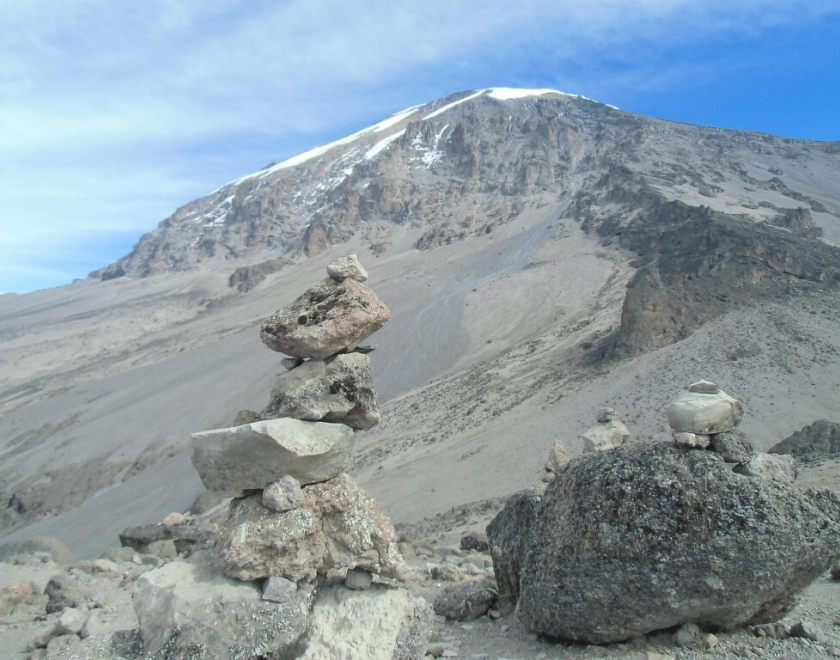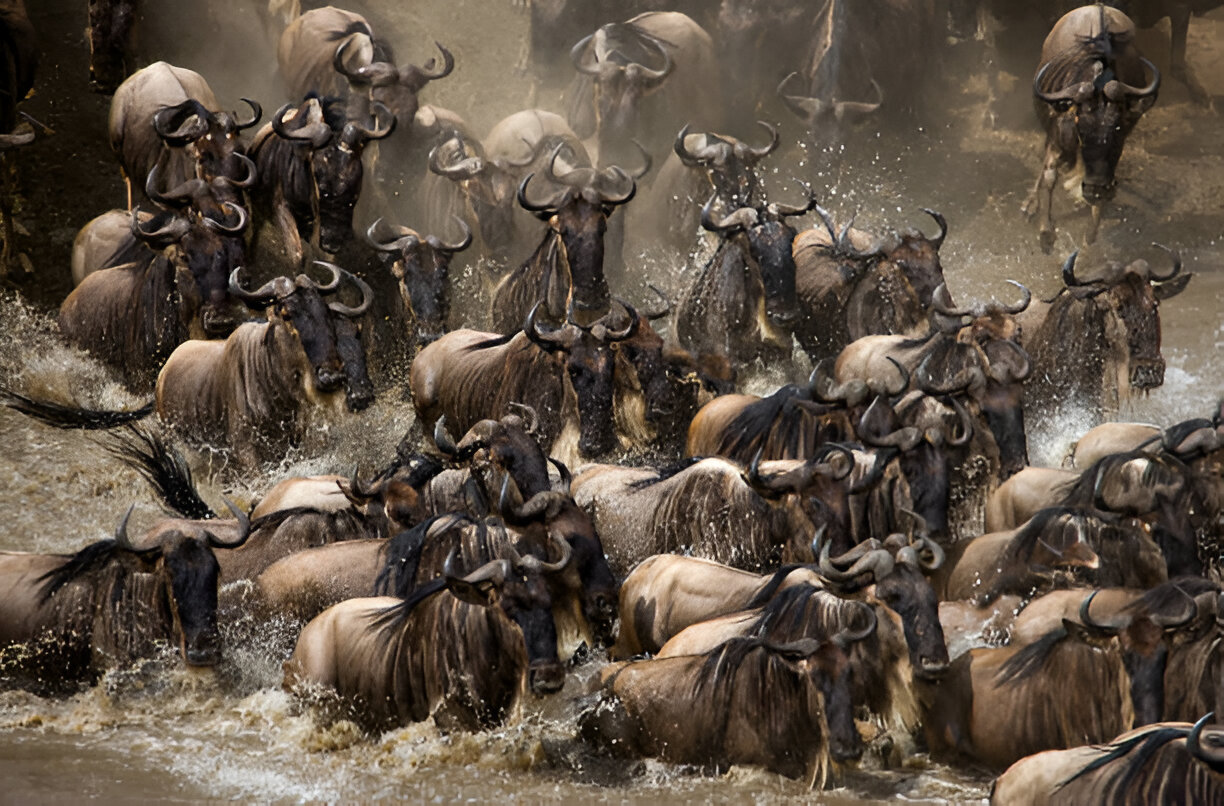
- Tanzania - East Africa
What Altitude Is Kilimanjaro’s Summit?
Mount Kilimanjaro is one of Africa’s most iconic natural landmarks and the highest peak on the continent. When planning a trek, one of the first questions travelers ask is: “What altitude is Kilimanjaro’s summit?” Understanding the altitude, its effects on your body, and the challenges it presents is essential for a safe and successful climb.
This article provides a complete guide to Kilimanjaro’s summit altitude, including detailed information on routes, altitude sickness, acclimatization strategies, physical preparation, and tips to maximize your summit success.
Kilimanjaro: Africa’s Highest Peak
Mount Kilimanjaro rises majestically in northern Tanzania near the border with Kenya. It is a free-standing volcanic mountain with three distinct volcanic cones:
Kibo: The highest cone, home to Kilimanjaro’s summit.
Mawenzi: Second highest, rugged and dramatic, not commonly climbed to the peak.
Shira: Plateau area, often crossed during trekking routes.
The mountain’s highest point, Uhuru Peak, is on Kibo’s crater rim.
What Altitude Is Kilimanjaro’s Summit?
The summit of Kilimanjaro, Uhuru Peak, stands at 5,895 meters (19,341 feet) above sea level.
This makes Kilimanjaro the tallest free-standing mountain in the world.
It is the highest point in Africa, often a key bucket-list goal for trekkers worldwide.
Reaching this altitude requires careful preparation and attention to altitude sickness.
Knowing what altitude is Kilimanjaro’s summit helps climbers understand the physical demands and plan their trek effectively.
Understanding the Altitude Zones
Climbing Kilimanjaro involves passing through several altitude zones, each with distinct climates and ecological features:
Cultivation Zone (1,800–2,800 m / 5,905–9,186 ft)
Tropical farmland, coffee plantations
Warm temperatures, moderate oxygen levels
Forest Zone (2,800–3,500 m / 9,186–11,483 ft)
Dense rainforest, mosses, and orchids
Cooler, humid conditions
Heath and Moorland Zone (3,500–4,000 m / 11,483–13,123 ft)
Shrubs, giant groundsels, and high-altitude flora
Temperature drops significantly
Alpine Desert Zone (4,000–5,000 m / 13,123–16,404 ft)
Sparse vegetation, rocky terrain
Dry, cold, and challenging conditions
Arctic Zone (5,000–5,895 m / 16,404–19,341 ft)
Snow, ice, and glaciers near Uhuru Peak
Low oxygen levels, extreme cold
Understanding these zones is critical for preparing for Kilimanjaro’s summit altitude and the physiological challenges it presents.
Effects of High Altitude
At 5,895 meters, the summit’s altitude has significant effects on the human body:
Reduced Oxygen Levels: Only about 50% of oxygen is available compared to sea level.
Altitude Sickness: Symptoms include headaches, nausea, dizziness, shortness of breath, and fatigue.
Cold Temperatures: Nighttime temperatures near the summit can drop below -20°C (-4°F).
Physical Strain: Climbing steep, rocky terrain at high altitude is demanding.
Acclimatization and pacing are essential to safely reach Kilimanjaro’s summit.
Chat with our expert direct via email!
Kilimanjaro Climbing Routes and Summit Altitude
All trekking routes reach Uhuru Peak, but they vary in difficulty, duration, and acclimatization opportunities:
1. Marangu Route
Duration: 5–6 days
Known as the “Coca-Cola Route,” with hut accommodations
Summit altitude: 5,895 m (19,341 ft)
Pros: Shorter route, huts for sleeping
Cons: Lower acclimatization success rate due to shorter duration
2. Machame Route
Duration: 6–7 days
Scenic route with more challenging terrain
Summit altitude: 5,895 m (19,341 ft)
Pros: Better acclimatization, higher summit success rate
3. Lemosho Route
Duration: 7–9 days
Remote and scenic, gradually ascending
Summit altitude: 5,895 m (19,341 ft)
Pros: Excellent acclimatization, higher chances of summiting
4. Shira Route
Duration: 7–8 days
Starts from the plateau, merges with Lemosho
Summit altitude: 5,895 m (19,341 ft)
Pros: Scenic and gradual ascent
5. Rongai Route
Duration: 6–7 days
Northern approach, less crowded
Summit altitude: 5,895 m (19,341 ft)
Pros: Dry route, less traffic, good acclimatization
All routes lead to the same altitude of 5,895 meters, but route choice impacts success rate, comfort, and acclimatization.
Acclimatization and Summit Success
Proper acclimatization is critical for coping with Kilimanjaro’s summit altitude:
Follow the “Climb High, Sleep Low” Principle: Gain altitude during the day, then descend to sleep.
Schedule Extra Days: Longer treks (7–9 days) significantly improve summit success.
Stay Hydrated: Helps maintain oxygen transport in the body.
Ascend Slowly: Avoid rapid ascents to reduce altitude sickness risk.
Monitor Symptoms: Guides often use pulse oximeters to monitor oxygen levels.
Well-acclimatized climbers have a higher likelihood of reaching Uhuru Peak safely.
Physical Preparation
Trekking to 5,895 m requires:
Cardiovascular Fitness: Running, cycling, or hiking with a backpack
Strength Training: Leg and core strength for steep ascents
Endurance Hikes: Multi-day hikes at lower altitudes to simulate Kilimanjaro conditions
Mental Preparation: Summit attempts can be long and mentally demanding
Physical readiness ensures you can handle Kilimanjaro’s summit altitude without excessive fatigue or health risks.
Tips for Reaching Kilimanjaro’s Summit
Hire Experienced Guides: Mandatory on all routes; essential for safety.
Use Porters for Gear: Reduces physical strain during ascent.
Pack for All Conditions: Layered clothing, gloves, hats, and trekking poles.
Start Early for Summit Night: Most routes begin the final ascent around midnight.
Stay Positive: Mental endurance is as important as physical readiness.
Following these tips increases your chances of reaching the 5,895-meter summit successfully.
Frequently Asked Questions
Q: What altitude is Kilimanjaro’s summit in feet?
A: 19,341 feet above sea level.
Q: How long does it take to reach the summit?
A: Depending on the route, 5–9 days for the trek, with 6–12 hours for the summit push.
Q: Is Kilimanjaro technically difficult?
A: The climb is non-technical but physically challenging due to altitude.
Q: Can anyone reach the summit?
A: With preparation, acclimatization, and guidance, many fit travelers can reach Uhuru Peak.
Q: What is the best route for acclimatization?
A: Longer routes like Lemosho and Machame offer better acclimatization and higher summit success.
Conclusion
So, what altitude is Kilimanjaro’s summit? It stands at 5,895 meters (19,341 feet) above sea level, making it Africa’s highest peak. Understanding the altitude, its effects, and the mountain’s ecological zones is essential for a safe and successful climb.
Kilimanjaro’s summit is achievable for fit and prepared travelers, but careful route selection, acclimatization, physical training, and expert guidance are crucial. By preparing adequately, climbers can enjoy the thrilling experience of standing atop Africa’s roof, witnessing breathtaking sunrises and panoramic landscapes, and checking one of the world’s most iconic summits off their bucket list.
Reaching Kilimanjaro’s summit is not just about altitude — it’s about preparation, endurance, and experiencing a journey through Tanzania’s diverse ecosystems, from tropical rainforest to alpine desert.
📌 Build Your Tour Today!


Olduvai Tours Tan_Africa
We ensure that your journey is not just a trip but a meaningful exploration of Tanzania’s natural and cultural treasures. Let us turn your dream safari into reality!
Booking your Adventure with Olduvai Tours Tan Africa
Olduvai Tours Tan Africa specializes in creating unforgettable Tanzania safari experiences, offering expert guides, personalized itineraries, and high-quality service.
Other Tours You May book with Olduvai Tours Tan_Africa:
Tanzania – East Africa Is It Possible to Do a Day Trip to a Park from Arusha? Arusha is…
Book 4 Days Tanzania Luxury Safari Itinerary Book Your 4 Days Luxury Safari Package! Tour Package Details 📍 Tarangire…
Affordable Group Joining Safari in Tanzania 2025 – Budget-Friendly 📍 Serengeti National Park, Ngorongoro Crater and Tarangire National Park…

